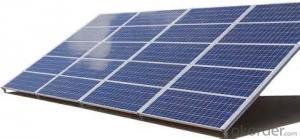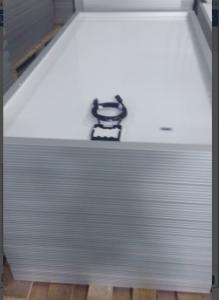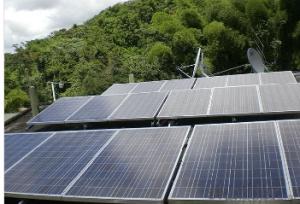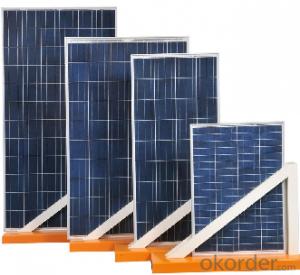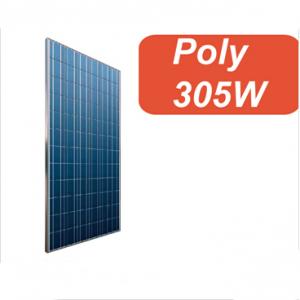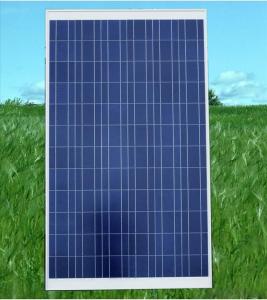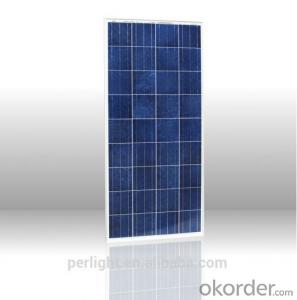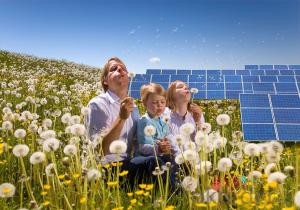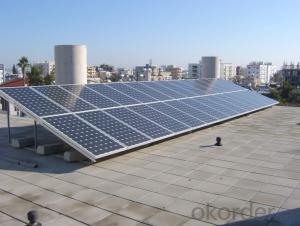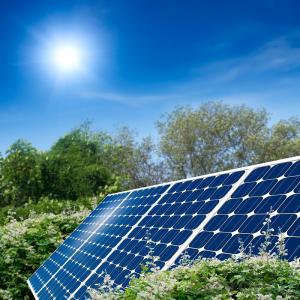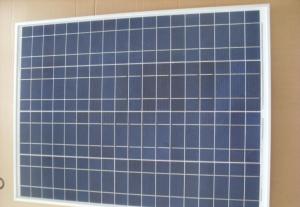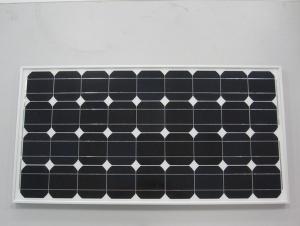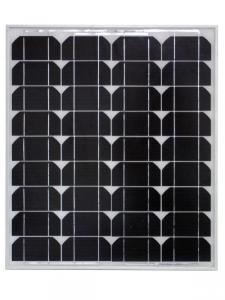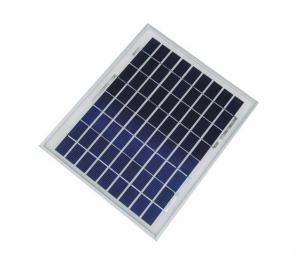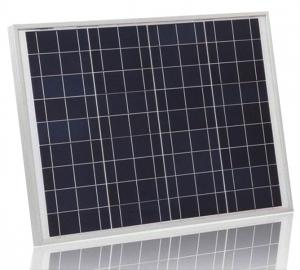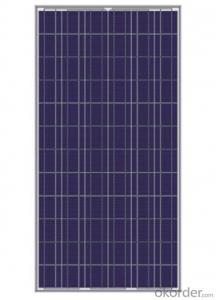High Efficiency Polycrystalline Metal Roofing Solar Panels 305W
- Loading Port:
- China main port
- Payment Terms:
- TT OR LC
- Min Order Qty:
- 1000 watt
- Supply Capability:
- 1000000 watt/month
OKorder Service Pledge
OKorder Financial Service
You Might Also Like
Specification
Introduction of Poly solar panels CNBM
Polycrystalline Solar Panels 305W With High Efficiency
CNBM Solar photovoltaic (PV) Panel is designed for large electrical power requirements. It is the optimal choice for both on-grid and off-grid power systems. CNBM Solar panel offers high performance of power per square foot of solar array. Monocrystalline silicon(c-Si): often made using the Czochralski process. Single-crystal wafer cells tend to be expensive, and because they are cut from cylindrical ingots, do not completely cover a square solar cell module without a substantial waste of refined silicon. Hence most c-Si panels have uncovered gaps at the four corners of the cells.
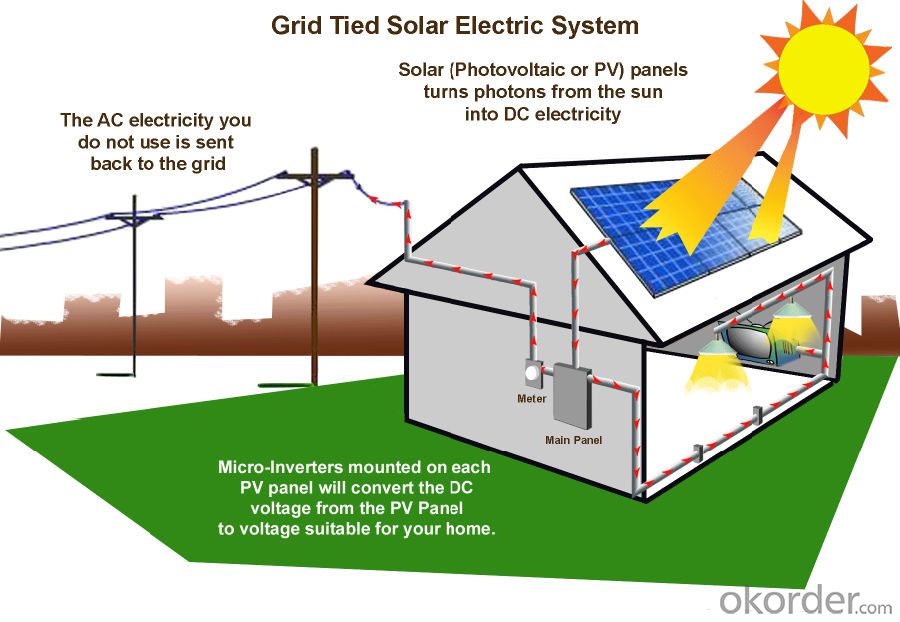
Feature
1.Solar Cell : High efficiency crystalline solar cell. Even if under the weak light, the solar module can produce maximum power output.
2.Tempered glass (toughened glass): Anti-reflecting coating and high transmission rate glass increase the power output and mechanical strength of solar module.
3.EVA and TPT: Using high quality EVA and TPT to prevent destroying and water.
4.Long lifetime: ≥25 years; Less power decrease.
5.Resisting moisture and etching effectively, not effected by geology.
6.The certificate issued by international authority: UL, TUV, IEC, VDE, CE.
Specification
Characteristics of Poly solar panels CNBM | |||||
Max Power Voltage Vmp(V) | 30.3 | 30.8 | 31.1 | 31.4 | 31.85 |
Max Power Current Imp(A) | 7.60 | 7.64 | 7.73 | 7.81 | 7.85 |
Open Circuit Voltage Voc(V) | 36.1 | 36.6 | 37 | 37.3 | 37.68 |
Short Circuit Current Isc(A) | 8.50 | 8.55 | 8.65 | 8.75 | 8.85 |
Max Power Pm(W) | 230W | 235W | 240W | 245W | 250W |
Temperature Coefficient of Cells Poly solar panels CNBM | |
NOCT | 45℃ ± 2℃ |
Temperature Coeffucients of Isc (%/℃) | 0.0492 |
Temperature Coeffucients of Voc (%/℃) | -0.3374 |
Temperature Coeffucients of Voc (%/℃) | -0.4677 |
Mechanical Data of Poly solar panels CNBM | |
Dimension | 1638 × 982 × 40 mm |
Weight | 19.5 kg |
No. of Cells and Connections | 60 (6 ×10) |
Tolerance | 0 ~ + 5 W |
Cell | Monocrystalline Cell 156 × 156 mm |
Packing | 624 Pcs/40ft(H) Container |
Limits of Poly solar panels CNBM | |
Operating Temperature | -40℃ to +85℃ |
Storage Temperature | -40℃ to +85℃ |
Max System Voltage | 1000VDC(IEC) / 600VDC(UL) |
Guarantees of Poly solar panels CNBM | |
Products Guarantee | 12 yrs free from defects in materials and workmanship |
Performance Guarantee | No less than 90% within 10yrs and no less than 80% within 25yrs |
Certificates | TUV(IEC61215&IEC61730),VDE(IEC61215&IEC61730),UL,CE |
Packaging Information
Package:26pcs/box
Quantity:1 box/pallent
Loading Capacity:952pcs/40ft
- Q: My washer is 20 volts 60 gz,9.6 amps. The solar panels I am looking at are: Sharp ND-208U Solar Panels (208 Watt) List Price $,479.99 Only $,049.99 Sharp Solar Panels (208 Watt) List Price $,352.99 Only $,040.99 If I buy that will it be enough to run my washer?
- P(Watts) = I(Amps) x V(Volts) Power = 9.6 x 20 Power = ,52 Watts. Therefore you would require 6 x 208Watt solar panels to power the machine on a clear bright day, many more on a cloudy or dull day. Sorry to be a little rain cloud!
- Q: Is it really necessary to make solar panels that expensive?
- I think it will cost about %0 Million US for a 50 Mega Watt Factory
- Q: Do solar panels require batteries?
- No, solar panels do not require batteries.
- Q: I need a 2v (500-800ma) solar panel that in can fit on a 24inx4in flat surface. Where can i get one this size and with this power?
- Hey Jeff, what you're talking about is frequently referred to as a, solar battery maintainer. There are lots of places that make and sell them, I have seen them in many auto parts stores and truck stops along the freeways. Go to google and search for a solar battery maintainer, they come is sizes similar to what you are searching for, but it will be difficult to find one that is not over 4 wide. Lots of them are about the size of the top of a shoe box, maybe 2 X 6, and come with a cigarette lighter cord attached. A 2 volt model at 500 ma, or /2 amp, works out to about 9 watts, assuming the 2 volt nominal voltage panel is actually optimized for 8 volts, as most of them are. These devices are designed to sit on the dash board of your car and keep your battery charged if you leave the car for a long period of time, like at the airport for a week in the winter. They actually work for that, we've used one before. What are you planning on doing with it? Charging a battery or running a device directly? Remember if you hook it straight to a device, and the current requirements of the device are less than the available sun will develope with your panel, the voltage may climb to a level too high for your device. If you're charging a battery, this does not cause a problem. Another option is to build your own. It can be a lot of work for just one panel, I've not done it myself, but there are videos on the subject. That device in real goods is a flexible panel, known in the solar world as, Amorphous. They are still a bit experimental, the ones they made a few years ago did not hold up as well as the solid ones, and they are expensive. You can get a /2 amp maintainer for around $25. Good luck Jeff, and take care, Rudydoo
- Q: How hard is it to install solar energy panels on your house? Is this a reasonable way to produce 00% of your house's energy? Is there any danger?
- Hi okorder
- Q: Is it possible for the everyday person to increase the efficiency of solar panels that they own? If so, how is it done?
- There are 3 (simple) ways to increase the efficiency of a solar panel at home - they all work by increasing the amount of light that falls onto it: . Have the solar panel track the sun throughout the day so that it always faces it; 2. Place a lens (larger than the panel) in front of the panel that focuses the light from the sun onto it. 3. Have mirrors around the panel than redirect light from themselves onto the solar panel. (e.g. imagine a satellite dish with the solar panel at the front and the dish being all mirrored.)
- Q: I want to be more self sufficient and get solar panels for electricity in a small house any tips will help. i need to know how many watts is enough and ect.
- Unless you're very rich, you won't be able to afford solar panels that can meet the average demand of a home. In the US, the average demand for a home is 920 kwh per month, which amounts to 3,833 Watt panels if you assume 8 hours of usable sunshine and don't take into account your location. At current installation rates that's easily a $9,65 project. If you assume a 25 year useful life, it amounts to a return of 3.3% per annum at 0 cents a kwh not counting the costs of repair, insurance, the inverter, any fees to the utility for net metering if any etc. You would be better off putting $9,65 into a mutual fund until better technology or government incentives came along, in some areas, the government subsidies can make it worth your while. Also, keep in mind that in many areas, the net metering arrangements only deducts the power you've generated from your bill so you would want to size the array to meet your base usage in order to get the most from your investments. So meeting your actual needs would result in a loss on the return as there will be months where your usage is less than your average. In theory, if you put $7,208.69 into a mutual fund expected to return 4.4% per annum then you could withdraw enough to pay each month's power bill for 25 years at $0.0 a kwh and therefore be self sufficient through financial means. You would get more mileage focusing on heating and hot water as heating and hot water is 75% of a home's energy use and can be addressed with lower cost technologies like passive solar and solar thermal panels. You have to put it into perspective, it's an investment and you want a return that's competitive with your investment opportunities.
- Q: Are solar panels affected by shade?
- Yes, solar panels are affected by shade. Shading can significantly reduce the efficiency and overall energy production of solar panels. It is important to ensure that solar panels are installed in areas with minimal shade to maximize their performance.
- Q: Does anyone know the earnings potential for the actual fitter of pv solar panels,and the electricians earnings.ty.
- it depends on your solar panel, but you can sure supply most if all of your electronics and electric stuff in your house on a sunny day. If you want to know exactly how much power it supplies and how much $$ you can save you simply have to calculate how much power your home consumes per day/month. I know of people totally reliable on solar power for their home and I too will put solar panels on my home one day.
- Q: How do solar panels withstand hail and other extreme weather conditions?
- Solar panels are designed to withstand various weather conditions, including hail and extreme weather. They are typically made with durable materials such as tempered glass, which is highly resistant to hail damage. Additionally, the panels undergo rigorous testing to ensure their ability to withstand high winds, snow loads, and extreme temperatures. The frames and mounting systems used to secure the panels also contribute to their resilience against severe weather. Overall, solar panels are built to be robust and reliable, enabling them to endure hail and other extreme weather conditions.
Send your message to us
High Efficiency Polycrystalline Metal Roofing Solar Panels 305W
- Loading Port:
- China main port
- Payment Terms:
- TT OR LC
- Min Order Qty:
- 1000 watt
- Supply Capability:
- 1000000 watt/month
OKorder Service Pledge
OKorder Financial Service
Similar products
Hot products
Hot Searches
Related keywords
